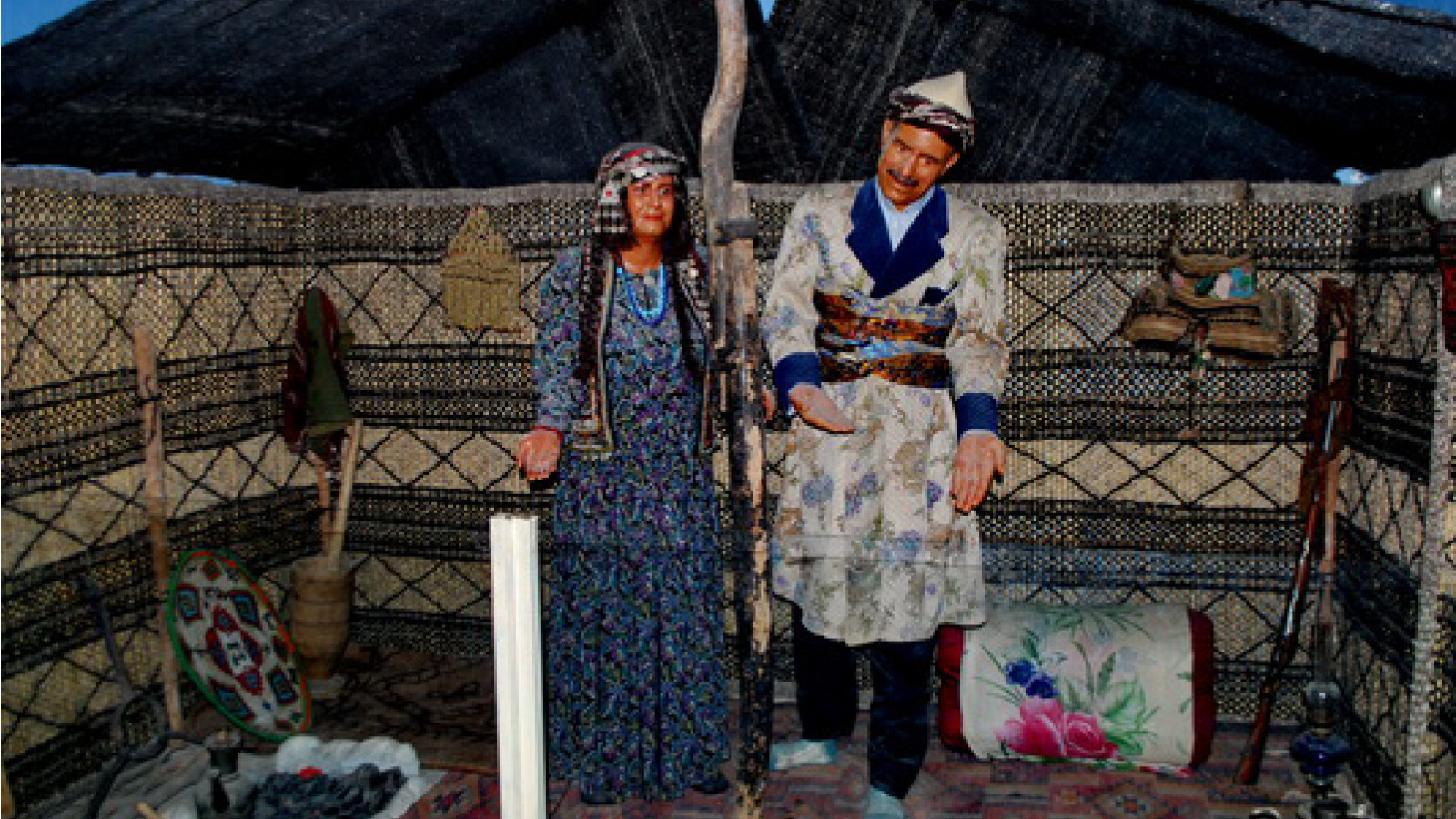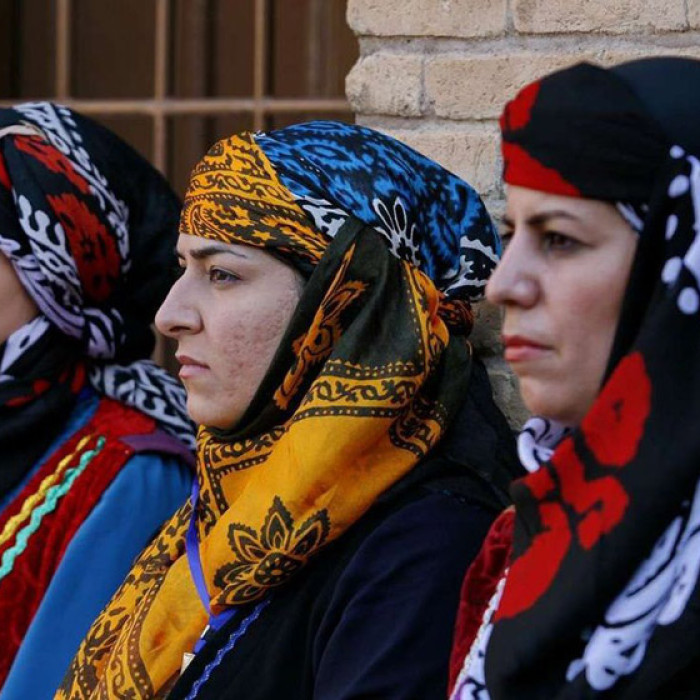
Lorestan is one of the western provinces of Iran. Its capital city is Khorramabad. The province is a total mountainous region and the Zagros mountains extends over all parts of it. This province is the neighbor of seven other provinces of Iran: Markazi, Ilam, Hamedan, Kermanshah, Isfahan, Khuzestan and Chahar Mahal and Bakhtirai. The main population of this province is constituted of Lur ethnic group and different Lur dialects along with Farsi and Laki are spoken in this province. People of this region has a unique clothing the color and pattern of which are inspired by their surrounding mountainous nature and has being considered as their symbol since the very past. Lur women wear very beautiful and colorful kerchiefs. This kerchief is locally called Sarvan. Other headdresses of Lur women are Tareh, Golvanini, Coat and Golvanini, Herati and Araqchin. These women wear a dress named Jomeh that is long and comfort and has no special collar. They wear a vest over the dress that is open, embroidered by coin and named Jelezqeh. Over this vest they put on a coat named Kalanjeh that is closed with buttons in front. They sometimes wear a short sleeve blouse made of velvet over their Jomeh. It reaches to the knee and is open. It is called Balkal and Sardari in some regions and is seen in black, green and red colors. The pants of women are named Shaval that is consisted of two parts: the lower part, from the knee to the ankle, sewed of a plain fabric, and the upper part, from knee to the waist, made of a colorful flowered fabric. The clothing of men in this region is named Shal-o-Satreh including a felt hat, a long white fabric named Shawl that is tightened several times around the waist, its width is 60-90 centimeters and its length about 6-9 meters. Also, the clock of these men that reaches to the knee and used only in the ceremonies and parties, is considered the oldest clothing of Iran. it is named Satreh. The clothing of Lur men is plain and less decorated than that of other tribes. They also used a handmade Giveh with an upper handwoven layer and leather shoes as their footwear.
